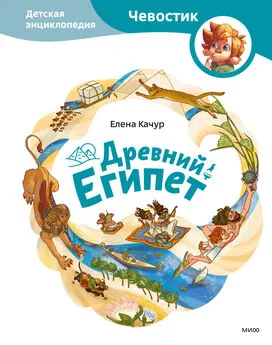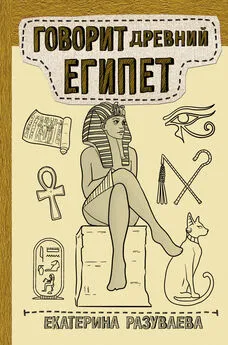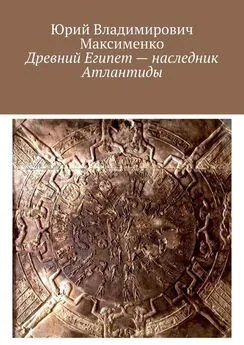Тоби Уилкинсон - Древний Египет. Подъем и упадок
- Название:Древний Египет. Подъем и упадок
- Автор:
- Жанр:
- Издательство:ООО «ЛитРес», www.litres.ru
- Год:2010
- ISBN:нет данных
- Рейтинг:
- Избранное:Добавить в избранное
-
Отзывы:
-
Ваша оценка:
Тоби Уилкинсон - Древний Египет. Подъем и упадок краткое содержание
Древний Египет. Подъем и упадок - читать онлайн бесплатно ознакомительный отрывок
Интервал:
Закладка:
Walker, Susan, and Peter Higgs (eds), Cleopatra of Egypt: From History to Myth (London, 2001)
Weeks, Kent R., «Medicine, Surgery, and Public Health in Ancient Egypt», in Jack M. Sasson (ed.), Civilizations of the Ancient Near East (New York, 1995), vol. 3, pp. 1787–98
Wegner, Josef, «A Middle Kingdom town at south Abydos», Egyptian Archaeology 17 (2000), pp. 8–10
Wegner, Josef, «Excavations at the Town of Enduring-are-the-Places-of-Khakaure-Maa-Kheru-in-Abydos. A Preliminary Report on the 1994 and 1997 Seasons», Journal of the American Research Center in Egypt 35 (1998), pp. 1–44
Wegner, Josef, «The Town of Wah-sut at South Abydos: 1999 Excavations», Mitteilungen des Deutschen Archdologischen Instituts, Abteilung Kairo 57 (2001), pp. 281–306
Weigall, Arthur E. P., Travels in the Upper Egyptian Deserts (Edinburgh and London, 1909)
Weinstein, James M., Eric H. Cline, Kenneth A. Kitchen and David O’Connor, «The World Abroad», in David O’Connor and Eric H. Cline (eds), Amenhotep III: Perspectives on His Reign (Ann Arbor, 1998), pp. 223–70
Wendorf, Fred, and Romauld Schild, «Implications of Incipient Social Complexity in the Late Neolithic in the Egyptian Sahara», in Renee Friedman (ed.), Egypt and Nubia: Gifts of the Desert (London, 2002), pp. 13–20
Wendorf, Fred, and Romauld Schild, «Nabta Playa and its Role in North-eastern African Prehistory», Journal of Anthropological Archaeology 17 (1998), pp. 97–123
Wengrow, David, «Rethinking „cattle cults” in early Egypt: towards a prehistoric perspective on the Narmer Palette», Cambridge Archaeological Journal 11 (2001), pp. 91–104
Wenke, Robert J., «Kom el-Hisn», in Kathryn A. Bard (ed.), Encyclopedia of the Archaeology of Ancient Egypt (London and New York, 1999), pp. 415–18
Wente, Edward F., Letters from Ancient Egypt (Atlanta, 1990) Wiener, Malcolm H., and James P. Allen, «Separate lives: the Ahmose Tempest Stela and the Theran eruption», Journal of Near Eastern Studies 57 (1998), pp. 1–28
Wilhelm, Gemot, «The Kingdom of Mitanni in Second-Millennium Upper Mesopotamia», in Jack M. Sasson (ed.), Civilizations of the Ancient Near East (New York, 1995), vol. 2, pp. 1243–54
Wilkinson, Richard H., The Complete Gods and Goddesses of Ancient Egypt (London and New York, 2003)
Wilkinson, Richard H., The Complete Temples of Ancient Egypt (London and New York, 2000)
Wilkinson, Toby, «Did the Egyptians invent writing?», in Bill Manley (ed.), The Seventy Great Mysteries of Ancient Egypt (London and New York, 2003), pp. 24–7
Wilkinson, Toby, Early Dynastic Egypt (London and New York, 1999)
Wilkinson, Toby, «Egyptian Explorers», in Robin Hanbury-Tenison (ed.), The Seventy Great Journeys in History (London and New York, 2006), pp. 29–32
Wilkinson, Toby, Genesis of the Pharaohs (London and New York, 2003)
Wilkinson, Toby, Lives of the Ancient Egyptians (London and New York, 2007)
Wilkinson, Toby, «Political unification: towards a reconstruction», Mitteilungen des Deustchen Archdologischen Instituts, Abteilung Kairo 56 (2000), pp. 377–95
Wilkinson, Toby, «Reality versus ideology: the evidence for „Asiatics” in Predynastic and Early Dynastic Egypt», in Edwin C. M. van den Brink and Thomas E. Levy (eds), Egypt and the Levant. Interrelations from the 4th through the Early 3rd Millennium BCE (London and New York, 2002), pp. 514–20
Wilkinson, Toby, Royal Annals of Ancient Egypt: The Palermo Stone and Its Associated Fragments (London and New York, 2000)
Wilkinson, Toby, State Formation in Egypt. Chronology and Society (Oxford, 1996)
Wilkinson, Toby, «Uruk into Egypt: imports and imitations», in J. Nicholas Postgate (ed.), Artefacts of Complexity: Tracking the Uruk in the Near East (Warminster, 2002), pp. 237–5
Wilkinson, Toby, «What a king is this: Narmer and the concept of the ruler», Journal of Egyptian Archaeology 86 (2000), pp. 23–32
Willems, Harco, Chests of Life. A Study of the Typology and Conceptual Development of Middle Kingdom Standard Class C of fins (Leiden, 1988)
Willems, Harco, «The nomarchs of the Hare Nome and early Middle Kingdom history», Jaarbericht van het Vooraziatisch-Egyptisch Genootschap Ex Oriente Lux 28 (1983–4), pp. 80–102
Willems, Harco, «The social and ritual context of a mortuary liturgy of the Middle Kingdom ( CT Spells 30–41)», in Harco Willems (ed.), Social Aspects of Funerary Culture in the Egyptian Old and Middle Kingdoms (Leuven, 2001), pp. 253–372
Winkler, Hans A., Rock-Drawings of Southern Upper Egypt, vol. 1 (London, 1938)
Winkler, Hans A., Volker und Volkerbewegungen im vorgeschichtlichen Oberegypten im Lichte neuer Felsbilder (Stuttgart, 1937)
Winlock, Herbert E., The Slain Soldiers of Neb-hepetre’ Mentu-hotpe (New York, 1945)
Wuttmann, Michel, «Ayn Manawir», Egyptian Archaeology 22 (2003), pp. 36–7
Yoyotte, Jean, «Le martelage des noms royaux ethiopiens par Psammetique II», Revue d’Egyptologie 8 (1951), pp. 215–39
Yoyotte, Jean, «Les principautes du Delta au temps de l’anarchie libyenne», Memoires publies par les membres de l’Institut Francois d Archeologie Orientale du Caire 66 (1961) (Melanges Maspero 1/4), pp. 121–81
Yoyotte, Jean, «Tanis», in Herbert Coutts (ed.), Gold of the Pharaohs (Edinburgh, 1988), pp. 10–27
Yoyotte, Jean, «The royal necropolis of Tanis and its treasures», in Herbert Coutts (ed.), Gold of the Pharaohs (Edinburgh, 1988), pp. 31–3
Yurco, Frank J., «Deir el-Medina», in Kathryn A. Bard (ed.), Encyclopedia of the Archaeology of Ancient Egypt (London and New York, 1999), pp. 247–50
Yurco, Frank J., «Was Amenmesse the Viceroy of Kush, Messuwy?», Journal of the American Research Center in Egypt 34 (1997), pp. 49–56
Zaba, Zbynek, The Rock Inscriptions of Lower Nubia (Czechoslovak Concession) (Prague, 1974)
Zabkar, Louis V., A Study of the Ba Concept in Ancient Egyptian Texts (Chicago, 1968)
Ziermann, Martin, Elephantine XVI Befestigungsanlagen und Stadtentwicklung in der Fruhzeit und im fruhen Alten Reich (Mainz, 1993)
Zivie, Alain-Pierre, «Ramses I», in Wolfgang Helck and Wolfhart Westendorf (eds), Lexikon der Agyptologie, vol. 5 (Wiesbaden, 1984), cols 99–108
Благодарности
Идея написать полную историю Древнего Египта, возможно, крылась в глубине моего сознания давно — как воплощение моей слепой любви к этой теме. Но она никогда бы не вышла на передний план без поощрения со стороны моего агента, Питера Робинсона. Ему — и его коллегам в Нью-Йорке, Эмме Пэрри и Кристи Флетчер, — я выказываю огромный долг благодарности.
Мои благодарности также моим уважаемым академическим коллегам, Полу Картлежду, Айдану Додсону, Кейт Спенс и Дороти Томпсон, которые щедро уделили свое время, чтобы прочесть части рукописи, проверить некоторые из моих предположений и исправить неточности в моем понимании тех предметов, в которых они являются специалистами. Роберт Моркот, Кеннет Китчен, Джон Коулман Дарнелл, Коллин Манасса и Лиам Макнамара дали неоценимые рекомендации и стимулирующие, оригинальные взгляды на целый ряд предметов.
Я благодарю Джона Гая за личное участие в судьбе этой книги, а также моих редакторов, Джона Фликера и Билла Свенсона, за их веру в проект и внимание к деталям; Кейт Спенс (вновь) и Джонни Лангриджа — за помощь в работе с картами.
Наконец, за все его терпение и понимание во время моих длительных периодов уединения при написании этой книги, я хотел бы поблагодарить Майкла Бейли. Я надеюсь, что получившийся труд несколько искупит многие ночи в одиночестве перед телевизором.
Примечания
1
Чендлер, классик американского детектива, несколько выбивается из этого ряда — если забыть, что он с 19 лет имел британское гражданство. (Прим. ред.)
2
В связи с особенностями египетской системы письма точное установление звучания слов и имен не представляется возможным, поскольку гласные на письме не воспроизводились. На основании фонетики современного коптского языка, отдаленного «потомка» древнеегипетского, этот пробел был частично восполнен — но неясностей всё еще остается много. Поэтому одно и то же имя может писаться по-разному, например, Амон или Аменхотеп, Тот или Тутмос. Неизвестно также, звонко или глухо произносились некоторые согласные, поэтому равноценны такие варианты, как Рамзес и Рамзес, Хор и Гор, и т. п. (Прим. перев.)
3
Напомним, что для дат этой эры меньшая цифра обозначает более поздний год. (Прим. перев.)
4
«Розеттский камень» — плита из гранодиорита с выбитыми на ней тремя идентичными по смыслу текстами, найдена в 1799 году на левом берегу основного западного рукава Нила, в 5 км от Средиземного моря, возле небольшого города Розетта (теперь Рашид) недалеко от Александрии. Камень был обнаружен капитаном Пьером-Франсуа Бушаром при сооружении фортификаций. Офицер понял важность находки и отправил камень в Каир, где за год до того по приказу Наполеона был открыт Институт Египта. В 1801 году французы потерпели в Африке поражение от англичан и были вынуждены передать им камень вместе с рядом других памятников. С 1802 года Розеттский камень хранится в Британском музее. Он весит примерно 760 кг, размеры лицевой плоскости 144,4 на 72,3 см. (Прим. перев.)
Читать дальшеИнтервал:
Закладка:
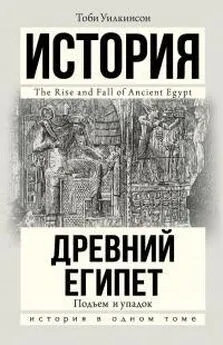

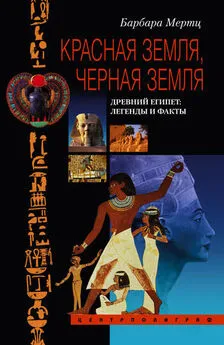
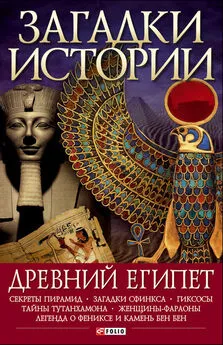
![Тоби Уилкинсон - Древний Египет. Подъем и упадок [калибрятина]](/books/1062111/tobi-uilkinson-drevnij-egipet-podem-i-upadok-ka.webp)
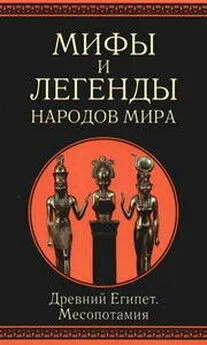
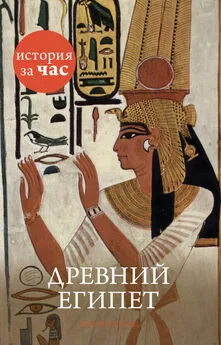
![Анатолий Фоменко - Книга 2. Расцвет царства[Империя. Где на самом деле путешествовал Марко Поло. Кто такие итальянские этруски. Древний Египет. Скандинавия. Русь-Орда на старинных картах]](/books/1125950/anatolij-fomenko-kniga-2-rascvet-carstva-imperiya-gde-na-samom-dele-puteshestvoval-marko-polo-kto-takie-italyanskie-etruski-drevnij-egipet-skandinaviya-ru.webp)
